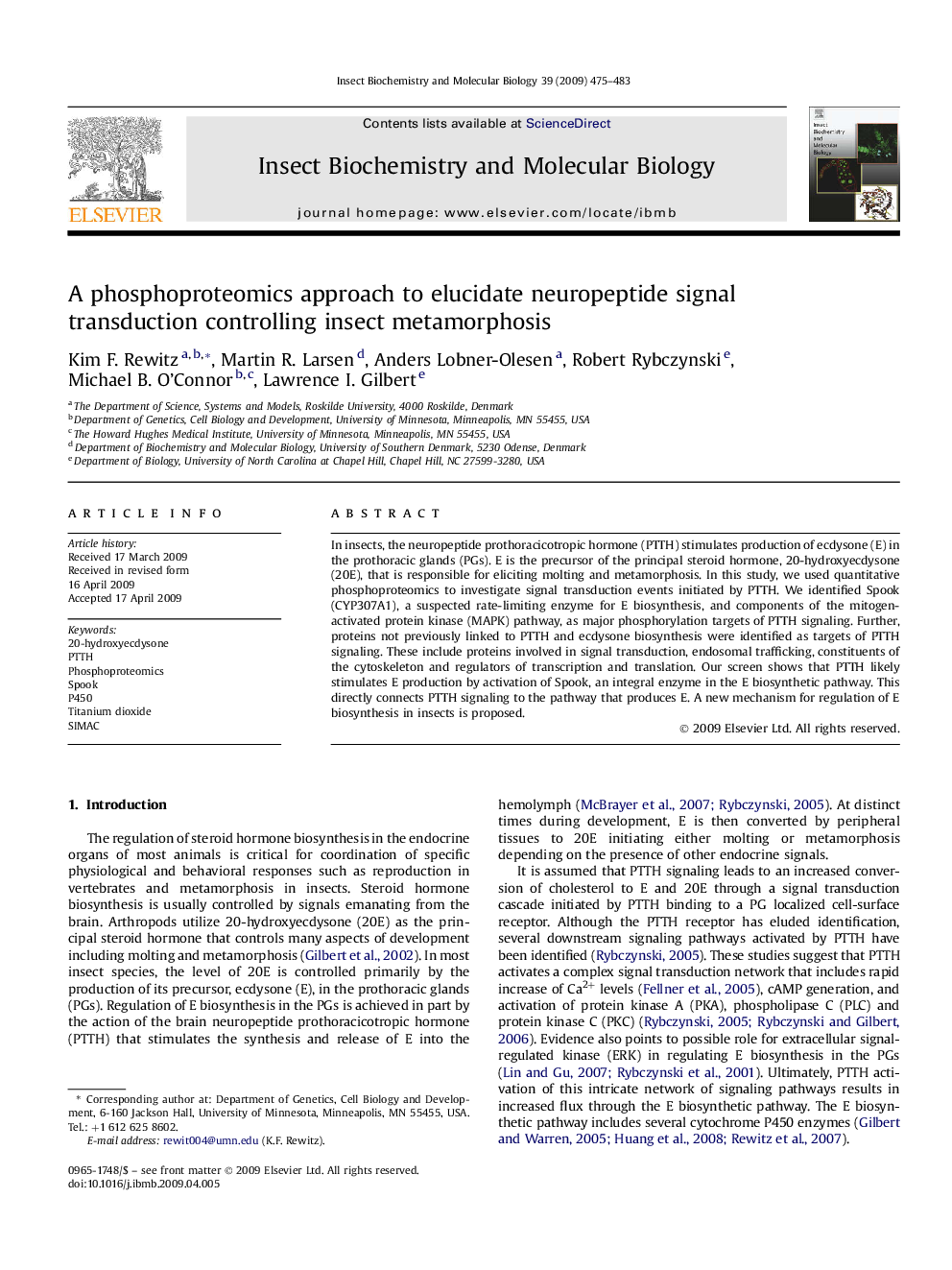| کد مقاله | کد نشریه | سال انتشار | مقاله انگلیسی | نسخه تمام متن |
|---|---|---|---|---|
| 1982713 | 1062310 | 2009 | 9 صفحه PDF | دانلود رایگان |

In insects, the neuropeptide prothoracicotropic hormone (PTTH) stimulates production of ecdysone (E) in the prothoracic glands (PGs). E is the precursor of the principal steroid hormone, 20-hydroxyecdysone (20E), that is responsible for eliciting molting and metamorphosis. In this study, we used quantitative phosphoproteomics to investigate signal transduction events initiated by PTTH. We identified Spook (CYP307A1), a suspected rate-limiting enzyme for E biosynthesis, and components of the mitogen-activated protein kinase (MAPK) pathway, as major phosphorylation targets of PTTH signaling. Further, proteins not previously linked to PTTH and ecdysone biosynthesis were identified as targets of PTTH signaling. These include proteins involved in signal transduction, endosomal trafficking, constituents of the cytoskeleton and regulators of transcription and translation. Our screen shows that PTTH likely stimulates E production by activation of Spook, an integral enzyme in the E biosynthetic pathway. This directly connects PTTH signaling to the pathway that produces E. A new mechanism for regulation of E biosynthesis in insects is proposed.
Journal: Insect Biochemistry and Molecular Biology - Volume 39, Issue 7, July 2009, Pages 475–483